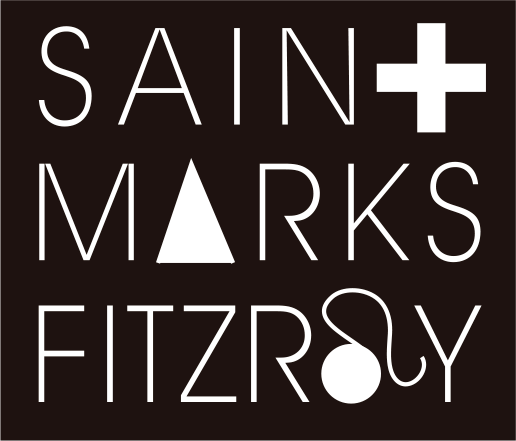Our buildings and history
For over 160 years Anglicans have gathered to worship God and serve the local community at the corner of George and Moor Streets in Fitzroy.
We celebrate the Christian faith in the rich and joyful Anglo-Catholic tradition.
We offer dignity and support to the poor through the Community Centre.
We host many community businesses that foster human wellbeing.
Our church and old school buildings are available for hire.
Church building
The foundation stone of Saint Mark’s Church was laid on 1 July 1853 and opened in early 1855. It is built in the early English Gothic Revival style, the first bluestone church built outside the central business district. Richard Grice, the generous pastoralist and philanthropist, contributed almost all the cost of its construction. Noted architects were involved in its construction: James Blackburn, the original architect, Leonard Terry who supervised the construction of the bluestone stairs and the distinctive gallery on the eastern side of the building in 1865 and Charles Webb who, in 1874, added the tower and spire.
There are fine lancet stained glass windows featuring the work of the firms Brooks Robinson Ltd and William Montgomery. Many of the windows were installed in the late nineteenth century and one in the narthex / baptistery in the late twentieth century. The blackwood reredos, which dates from 1939, features a mosaic of the last supper also by Brooks Robinson.
Major refurbishment and restoration works costing over $1 million took place in the 1990s including the installation of the Harrison and Harrison organ in 1998.
Daily services were commenced in 1885 during the time of the Reverend John Francis Stretch – later Bishop of Newcastle. During the 1920s and 1930s the Reverend Reginald Nicholls (Brother Bill) installed a screen in the church to show moving picture shows as part of the liturgy. Eucharistic Vestments were introduced in the 1960s and in 1973 a daily Mass commenced when Fr Michael King became the Vicar and adopted a modern expression of Anglo-Catholic worship. In 1975 he founded the Community of Saint Mark a religious order for men; the Brothers lived in the vicarage and assisted with parish visiting and counselling. In 1980 the Community, feeling called to a Benedictine form of life, left Fitzroy and became St. Mark's Priory, the Benedictine monastery at Camperdown.
Today the modern Anglo-Catholic form of worship continues with a fine musical program which is integrated with the ritual and text of the Mass.
Other buildings
Saint Mark’s property contains many interesting buildings. On the eastern side of the property on Hodgson Street the former St Mark’s School. It dates from 1891 having being relocated from the George Street side in 1923.
On George Street stands the former Parish Hall and Verger’s Cottage built in 1891 to the design of Hyndman & Bates Architects who also envisaged the building of a grand Vicarage in the same style with a return veranda. In the end, only the hall and the verger’s cottage were built. The Vicarage was built in 1910.
The red brick St Mark’s Community Centre, originally known as the Social Settlement buildings, was designed by the architectural firm Gawler and Drummond in 1923. This building contains a room which was the first free children’s library in Victoria and features stained glass windows featuring fairies and pixies in and Australian setting from book illustrations of Ida Rentoul Outhwaite.
During the 1970s the Saint Mark’s Social Settlement Building, built in 1926, was known as the Community Centre. In the late 1970s, when the religious Community of Saint Mark was in the process of formation, they and sisters from the Community of the Holy Name, conducted various programs for families from the Community Centre. It became known as the Saint Mark’s Community Centre in 1980 when the parish engaged a social worker, Peter Burke, to run emergency relief and a community lounge. Funding for its work came from the Brotherhood of St Laurence and donations of foodstuffs and other things from numerous parishes in the Diocese.
In 2010 the parish entered a partnership with Anglicare Victoria to run the centre.



